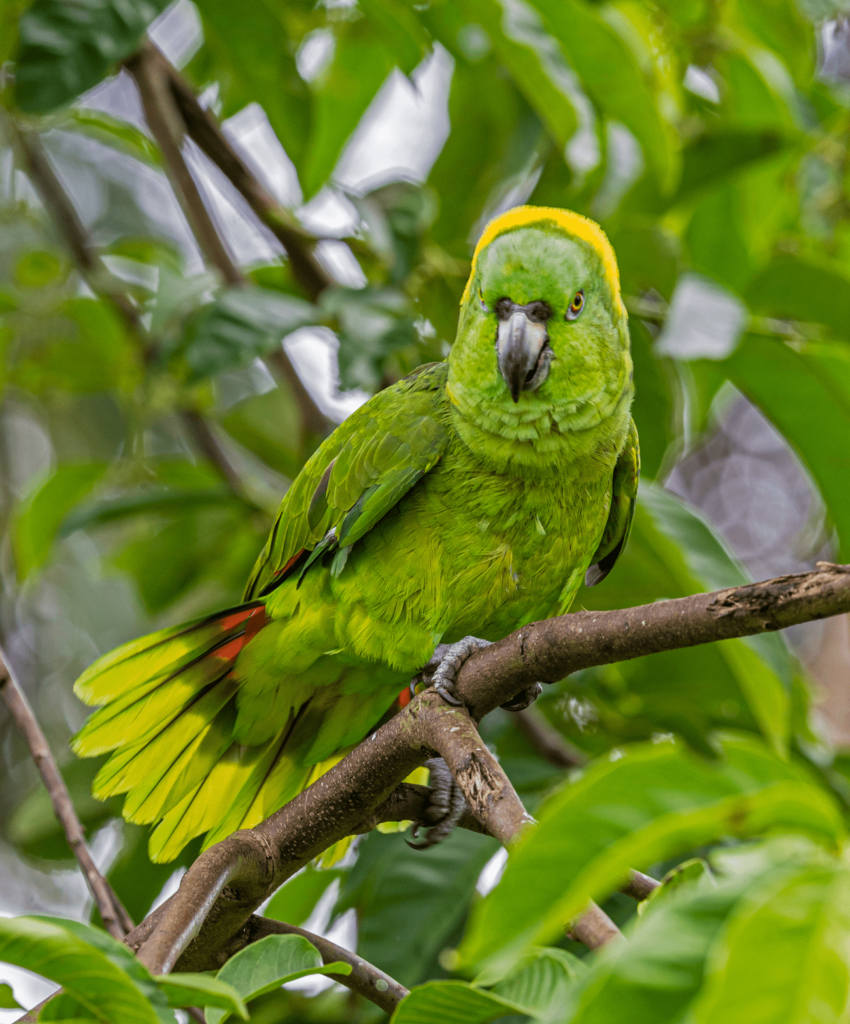Yellow-naped Amazons: Rescue from Trade
Yellow-naped Amazons are in serious decline in the wild. Illegal trapping is a main concern for the species.
In 2023, WPT’s Yellow-naped Amazon Coordinator Noelia Volpe joined forces with the Ministry of Environment and Natural Resources at the Santa Rita protected area in El Salvador. There, five Yellow-naped Amazons seized from trade needed treatment and rehabilitation. In a collaborative effort, Noelia provided on-site training and a comprehensive care routine to guide the local parrot care team. The five were later released once they recovered from their ordeal.
In a new initiative, WPT-supported Green Island Challenge in the Bay Islands, Honduras, is expanding its education program with island-specific lessons focused on the environment, parrots, and fostering a deeper connection to the land. In addition to their educational efforts, Green Island Challenge is conducting anti-poaching patrols, nest box installations and parrot counts.
IUCN/CITES Status: Critically Endangered / Appendix I
Population: About 2600
Range: A.a. auropalliata: Pacific slope from Oaxaca, Mexico to NW Costa Rica. A.a. parvipes: Mosquitia of Honduras and NE Nicaragua. A.a. caribaea: Bay Islands, Honduras
Natural history: The Yellow-naped Amazon favours deciduous forest, pine-oak woodland, gallery forest along waterways, arid to semi-arid savanna woodland, and dry scrubland with remnant woodlots or scattered trees. Birds are found in pairs or flocks with larger gatherings at communal roosts and feed areas. They feed on seeds of Cochlospermum, Curatella, figs and ripening Terminalia fruits. Bay Island birds feed on pine cones.

